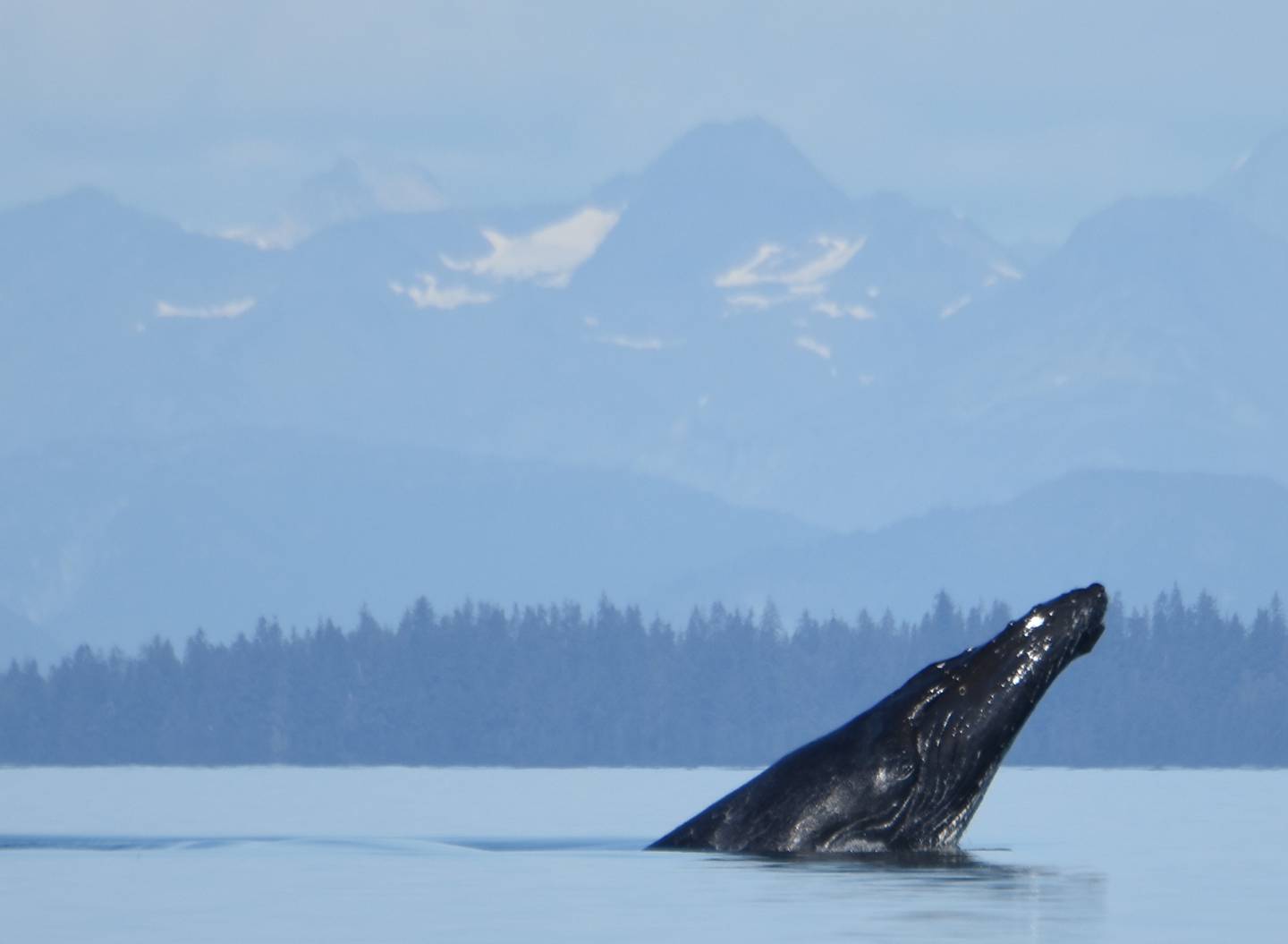Post Description
A female humpback whale Glacier Bay National Park and Preserve biologists know as #219 surfaces in the waters near the park. Humpback whales return year after year to the same areas to feed. Biologists have seen whale 219 feeding in Icy Strait every year from 1982-2014, and from 2017-2023. (NPS photo by Janet Neilson, taken under the authority of scientific research permit #21059 issued by the National Marine Fisheries Service)
Additional Photos
A female humpback whale Glacier Bay National Park and Preserve biologists know as #219 breaches in the waters near the park. When a whale breaches, it often leaves behind flakes of skin on the surface of the ocean. Scientists can collect sloughed skin and send it to a laboratory to learn about the genetics or diet of the whale. (National Park Service photo by Christine Gabriele, taken under the authority of scientific research permit #21059 issued by the National Marine Fisheries Service)
The fluke — or tail fin — of a female humpback whale biologists know as #219. Humpback whale tails are as unique as a human fingerprint, with markings that are stable over the course of the whale’s life. (NPS photo by Christine Gabriele, taken under the authority of scientific research permit #21059 issued by the National Marine Fisheries Service)



:quality(70)/cloudfront-us-east-1.images.arcpublishing.com/adn/LYDL7N2RCZETPJF6V772MH6WNE.JPG)
:quality(70)/cloudfront-us-east-1.images.arcpublishing.com/adn/LJSQW2674VHLFLGA7LYKYK7YNE.JPG)